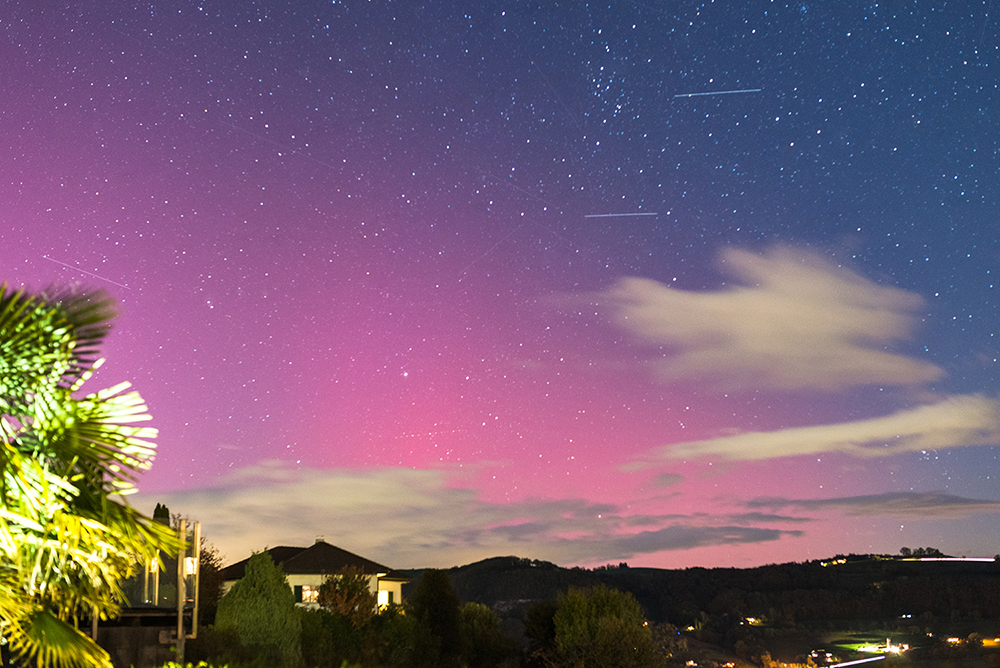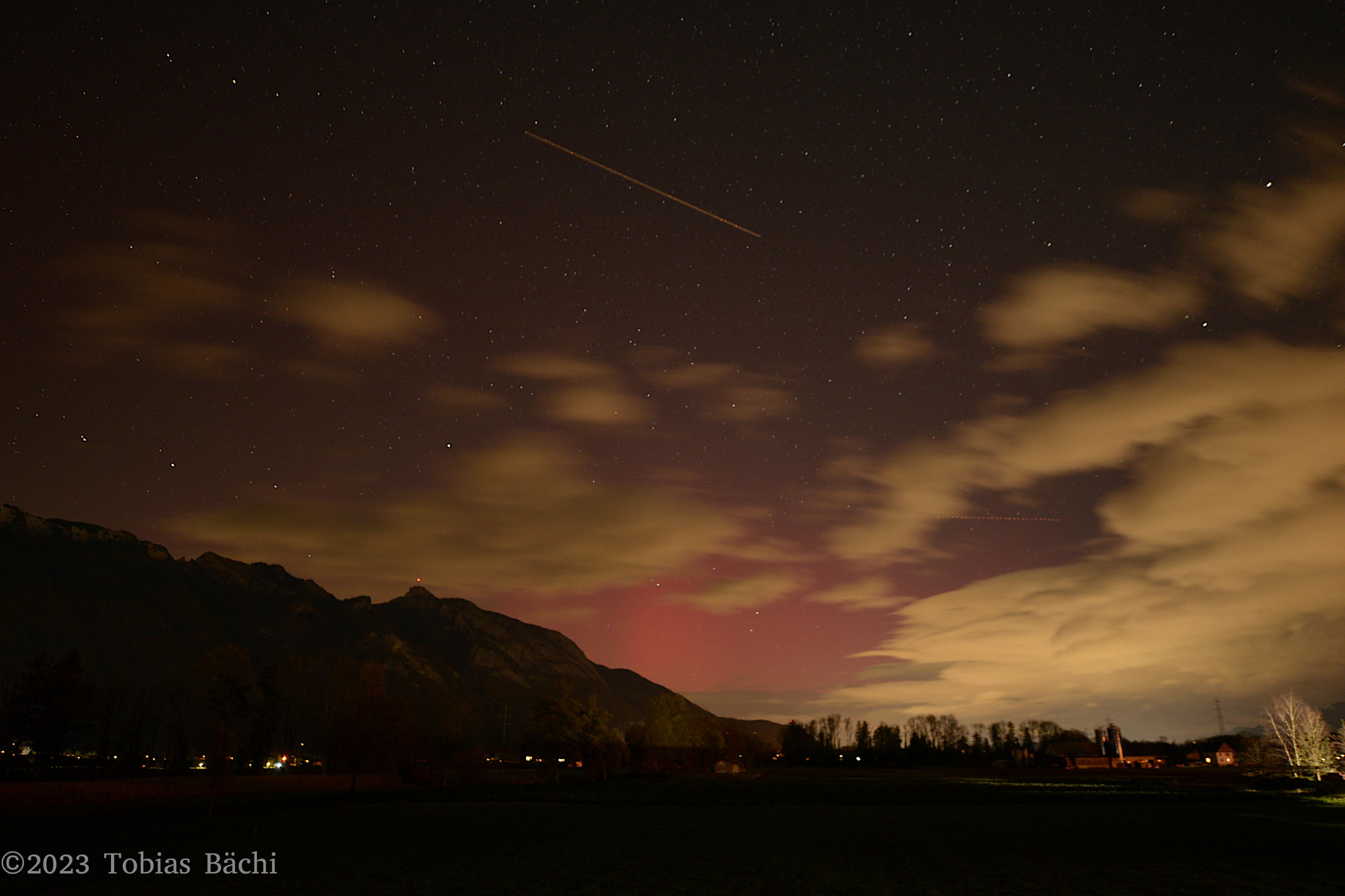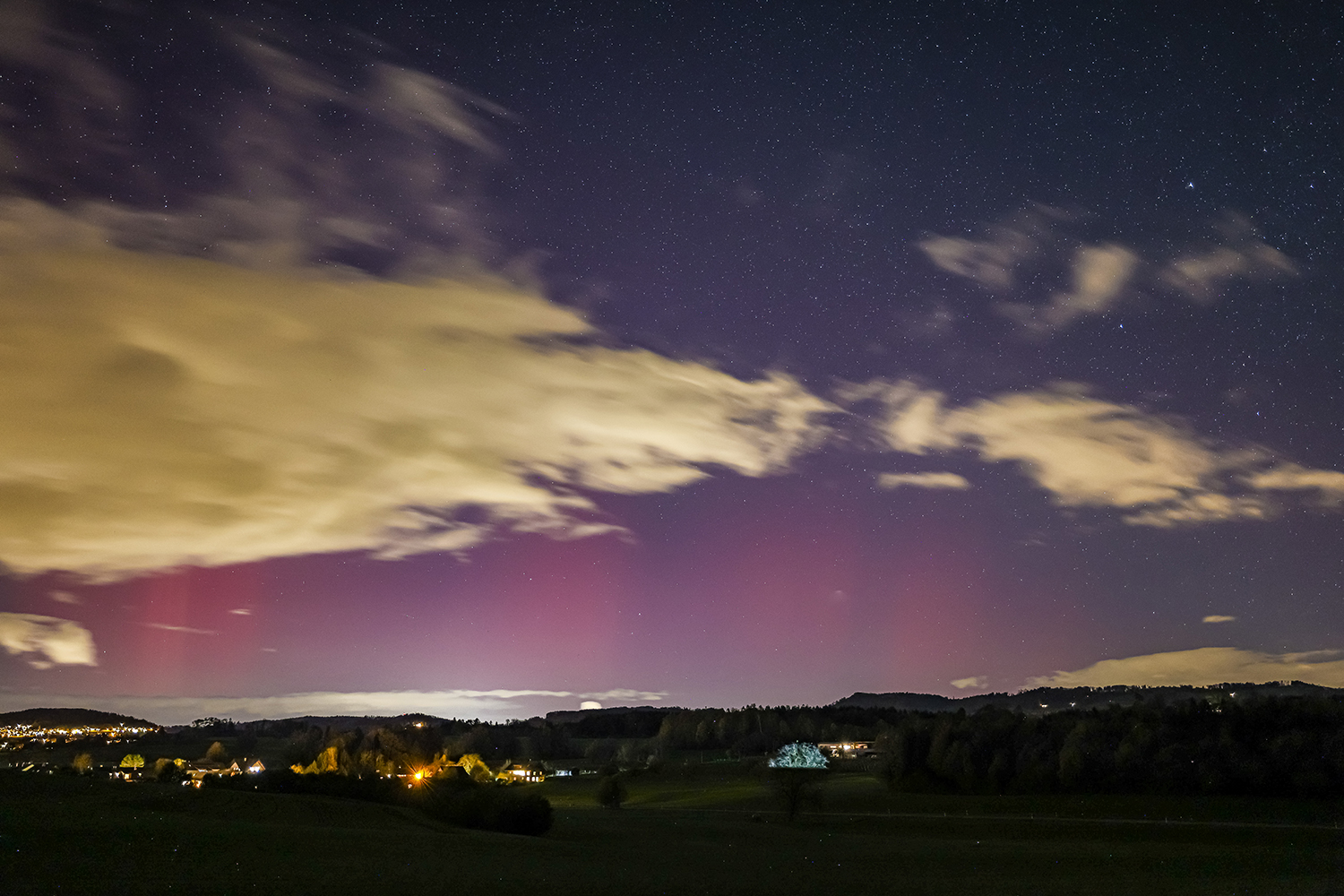
Northern lights dazzle over Swiss Alps

The northern lights, aka aurora borealis, are rare in the Alps. For the second time this autumn, the dancing pink, red and purple spectacle lit up the night skies in Switzerland.
For centuries, the mesmerising display of the aurora borealis has held humanity in awe. They appear during geomagnetic storms when disruptions in the Earth’s magnetic field occur, giving rise to hours of brilliant auroras generally at higher latitudes.

Typically, this dazzling spectacle is most prominently observed at a higher latitude, closer to the magnetic north and south poles, where these phenomena are known as the aurora australis. As geomagnetic activity increases, the region of the aurora expands to lower latitudes, in the direction of the equator. When geomagnetic activity is very high, the aurora may be seen at much lower latitudes around Earth that would otherwise rarely experience these polar lights.
Recently the natural spectacle was spotted in Switzerland on the night of September 24 to 25 and on the night of November 5 at around 6pm and 8pm, on both occasions linked to strong solar activity.
Short video of northern lights viewed from Bütschel, canton Bern, as filmed by Lukas Wyss (SRF)
The natural lightshow is caused by an interaction between charged particles from space and the Earth’s atmosphere. They are triggered by the so-called solar wind. This is primarily composed of charged particles, predominantly electrons and protons, ejected from the sun.

The colour of the northern lights depends on the kind of gas particles with which the charged particles interact in the atmosphere and the altitude at which these interactions take place. Green northern lights often arise from interactions with oxygen in higher atmospheric layers, while red or violet shades can emerge from interaction with nitrogen.

Northern lights are rare in the Alpine region. Swiss public radio SRF saidExternal link Sunday’s lights were more visible than in late September due to the stronger solar wind that was traveling at times over 500 km/second, containing around 30 particles per cubic centimetre.
In the next five years the phenomenon is likely to become more common, SRF said. Sunspots are increasingly visible at the solar equator, and coronal mass ejections, large eruptions of magnetised plasma from the sun’s outer atmosphere, will travel towards Earth more often and result in the light phenomenon.
#nordlichterExternal link #valaiswallisExternal link #WetterstationExternal link #wallis1815External link #meteoExternal link #oberwallisExternal link #roundshotlivecamExternal link @graechen_chExternal link @SEAEischollExternal link pic.twitter.com/n4jJqlv9XiExternal link
— Meteo-Oberwallis.ch (@MeteoOberwallis) November 5, 2023External link
In 1619, the Italian astronomer Galileo Galilei is credited with coining the term “aurora borealis” after the Roman goddess of dawn, Aurora, and the Greek god associated with the north wind, Boreas. However, the origins of the northern lights can be traced back even further, with the earliest known depiction believed to be a 30,000-year-old cave painting found in France.

In compliance with the JTI standards
More: SWI swissinfo.ch certified by the Journalism Trust Initiative






























You can find an overview of ongoing debates with our journalists here . Please join us!
If you want to start a conversation about a topic raised in this article or want to report factual errors, email us at english@swissinfo.ch.